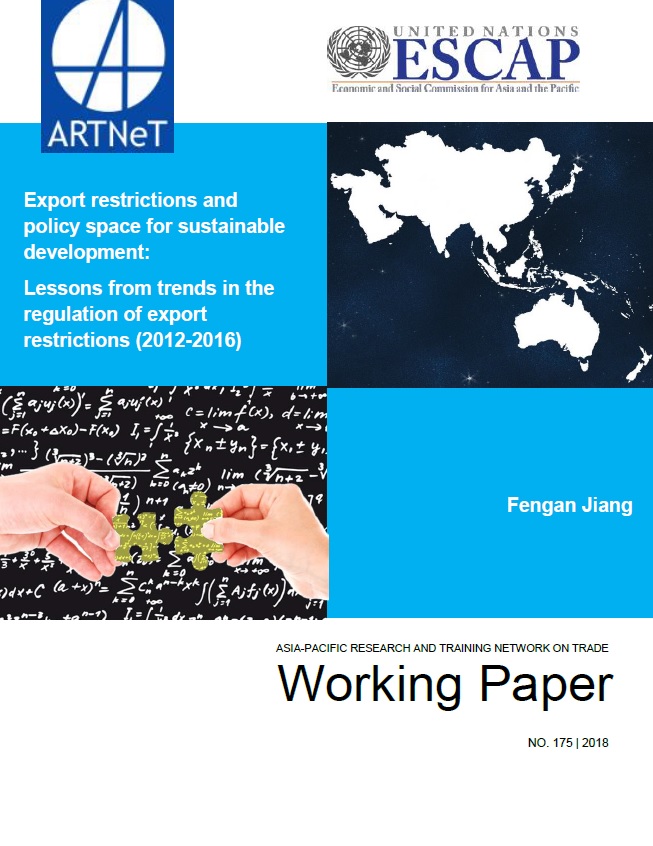Export restrictions and policy space for sustainable development: Lessons from trends in the regulation of export restrictions (2012-2016)

The General Agreement on Tariffs and Trade 1994 (GATT 1994) generally prohibits the World Trade Organization (WTO) members from using export quotas and other quantitative restrictions with certain exceptions. By contrast, export duties are not regulated under the GATT 1994 though a few WTO members such as China commit to restricting the use of export duties in their WTO accession protocols. Given the plethora of regional trade agreements (RTAs) and the slow progress of the WTO Doha Round of multilateral trade negotiations, the incorporation of WTO-plus provisions into RTAs that regulate export restrictions in a more effective manner could contribute to a transparent and predictable trade regime. In a series of WTO cases about export restrictions, namely China—Raw Materials (DS394/ DS395/ DS398), China—Rare Earths (DS431/ DS432/ DS433), and most recently China—Raw Materials II (DS508/ DS509), China claimed that its export restrictive measures on various industrial inputs were adopted for protecting the environment. Although China’s arguments failed to convince the panel and the Appellate Body in the first two cases, these cases raise the question of how to effectively regulate export restrictions without constraining countries’ policy space to pursue legitimate policy goals. This paper seeks an answer from the perspective of sustainable development as export restrictions could contribute to ensuring food security, reducing pollution, and conserving exhaustible natural resources when the better options are not financially or practically available. By examining 11 WTO accession protocols and 50 regional trade agreements that have entered into force in the period from 2012 to 2016, this paper reveals recent trends in the regulation of export restrictions and their implications on countries’ policy space to achieve sustainable development goals. An analysis is offered of the major approaches to incorporating WTO-plus provisions, and better options to replace export restrictions for achieving sustainable development are also discussed.
